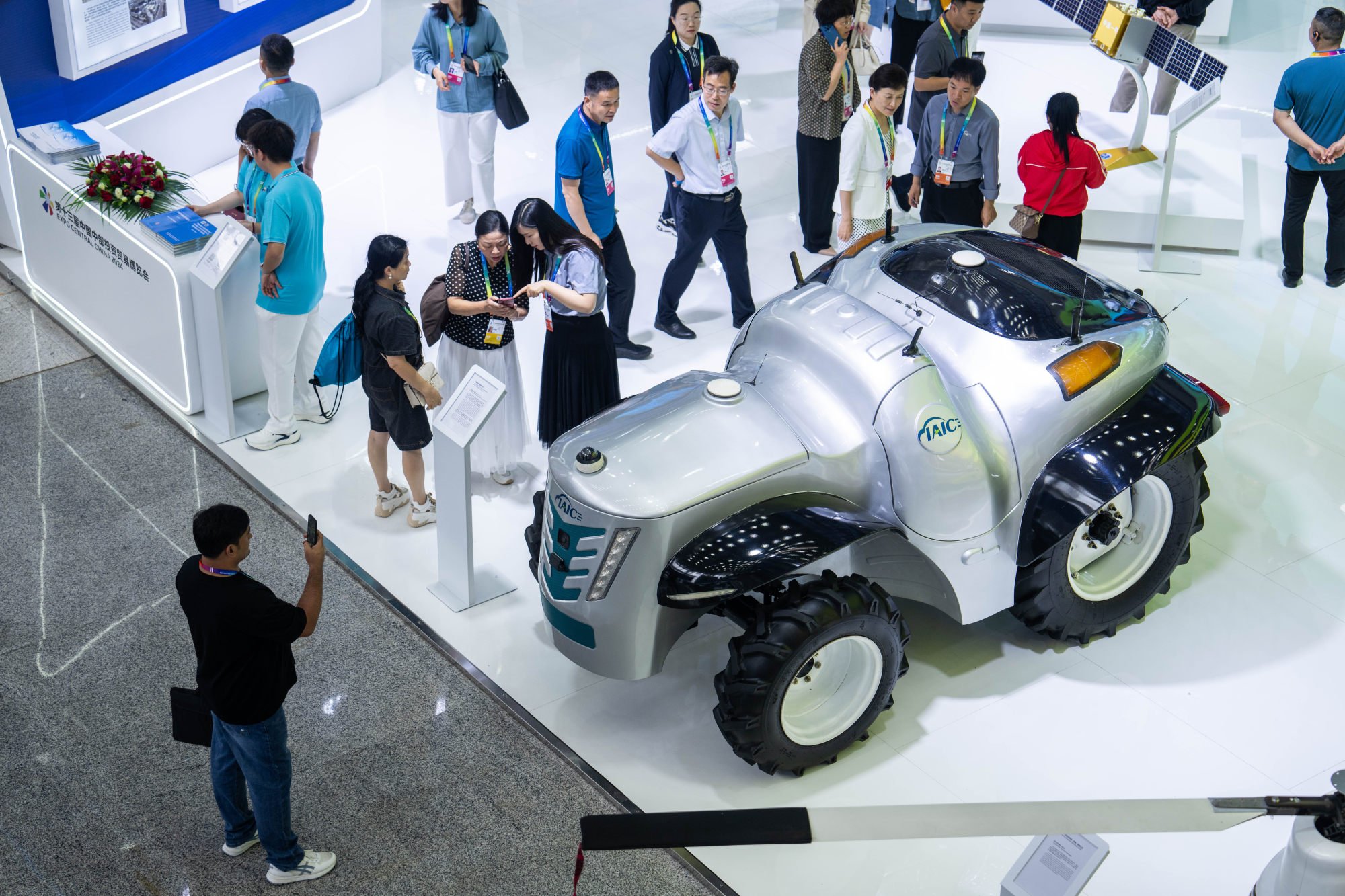Here is what you need to know about green hydrogen:
What is green, or low-carbon hydrogen?
Hydrogen, the world’s most abundant chemical element, is a colourless, odourless and highly flammable gas. It is currently mostly used in oil refineries to lower the sulphur content of diesel and to make ammonia, a key fertiliser ingredient.
Globally, some 98 per cent of hydrogen produced in 2022 was from fossil fuels – mostly natural gas – through chemical reactions with steam, a highly carbon-intensive process, according to the International Renewable Energy Agency.
Without expensive equipment to capture and store the emissions, each tonne of hydrogen produced from natural gas results in the emission of 10 to 14kg of carbon dioxide into the atmosphere and contributes to global warming, according to the International Energy Agency (IEA).
The low-carbon product is known as “green” hydrogen, which differs from “grey” hydrogen made from natural gas without capturing the carbon emissions, or “blue” hydrogen where the emissions are extracted and stored.
What are some of the promising green hydrogen utilisation cases, particularly in China?
Hydrogen, which produces no emissions when combusted, is already used to power fuel-cell vehicles, especially buses and lorries. But mass adoption has yet to take off in most markets because of high costs and competition from battery-powered alternatives.
Green hydrogen also holds promise as a clean alternative in the shipping sector, but it is primarily derivative products – ammonia and methanol – that are used in vessels because of their advantages in storage and transport.
Hydrogen-based steel production requires much less energy, as the temperature required to “reduce” – or remove oxygen – from iron ore, is less than that in the coal-based process. Also, recycled steel can be used in hydrogen-based steel making, further cutting energy and emissions intensity.
China, the world’s largest emitter of greenhouse gases, is also the largest producer of coal power, steel, ammonia, cars and ships. Green hydrogen can greatly reduce emissions from their manufacture and consumption.

What are China’s advantages and challenges in producing green hydrogen?
China’s wind and solar energy-rich northern, northeast and northwest regions are ideally situated to install green hydrogen production facilities.
Further research and development is needed to achieve cost reduction and high capacity utilisation to pave the way for commercialisation.
Which are the most significant green hydrogen pilot projects in China?
More than 30 large-scale green hydrogen projects have been announced, under construction or completed, involving 260 billion yuan (US$35.9 billion) of investment, according to industry portal newenergy.org.cn’s tally.
Located in Kuqa, in northwest Xinjiang Uygur autonomous region, the plant’s electrolysers have a total capacity of 260 megawatts, the world’s largest system in a single location, according to Sinopec. They are complemented by 10 spherical storage tanks with a combined capacity of 210,000 cubic metres.
The stored hydrogen is fed into the company’s oil refinery on site replacing grey hydrogen.
In March, China Huadian Group, one of the nation’s largest power producers, commissioned a green hydrogen project in Baotou, in Inner Mongolia autonomous region. With an annual capacity of 7,800 tonnes, it can meet the needs of 1,000 fuel-cell heavy-duty vehicles.

How do investors view green hydrogen opportunities?
Francesco Stadler, a director at impact investing network Sustainable Finance Initiative, said there is growing interest among private family offices in Hong Kong and Asia-Pacific because of policy initiatives.
“While barriers to green hydrogen adoption remain, be it technological, infrastructural or economical, hydrogen is now a technically mature decarbonisation solution that can be deployed along with other [alternatives] as part of a net-zero [emissions] strategy,” he said.
A prerequisite for green hydrogen to achieve commercial success is a major scale-up and further cost reduction in renewable energy, said Ed Northam, head of Asia-Pacific at energy infrastructure investor Macquarie Asset Management Green Investments.
“Green hydrogen is a solution to help decarbonise the hard-to-abate heavy industries and heavy-duty transport sectors,” he said. “But to deliver the energy transition, we must invest across the spectrum of energy solutions, and at the heart of that is renewable energy, which is required to power the production of green hydrogen.”


